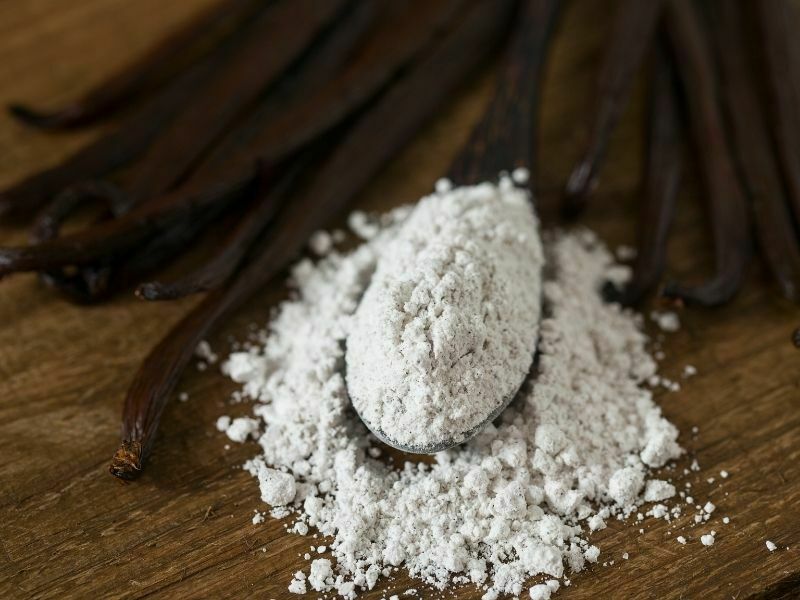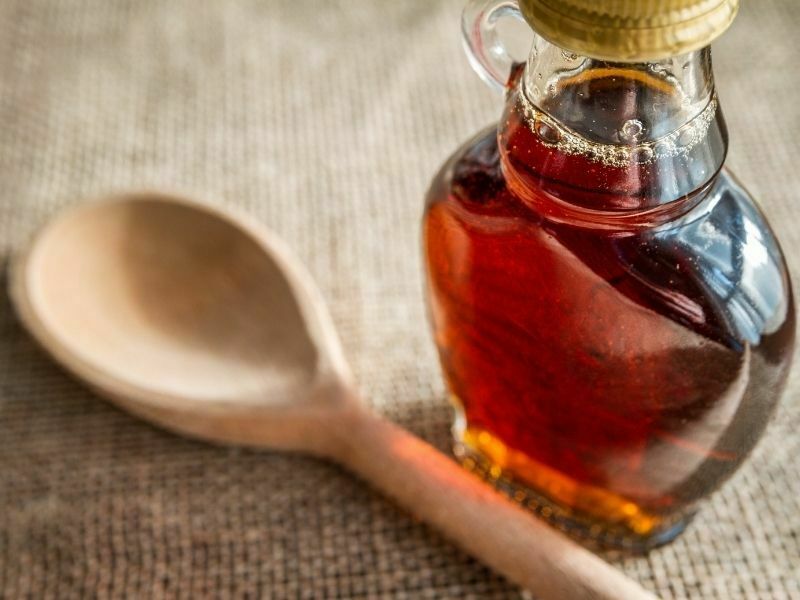Are you looking for a substitute for vanilla extract? If so, you’re not alone. There are lots of reasons why people might want to use a substitute for vanilla extract in their recipes: they don’t have it on hand, they don’t like the taste of vanilla extract, or they want to eat healthier and avoid artificial ingredients.
So what are your options? We’ll take a look at twelve different substitutes for vanilla extract and why each one might be a good choice for you.
What is a Vanilla Extract?
Vanilla extract is a flavoring made from vanilla beans. It’s a common ingredient in baking, as well as in foods like ice cream and soda.
Vanilla extract is made by steeping vanilla beans in a solution of ethanol or other high-proof alcohol (like grain alcohol) for several weeks to several months. The alcohol draws out the vanilla flavor and aroma from the bean, which is then removed by filtering out the bean pulp. The remaining liquid is more concentrated than whole vanilla bean paste, but not as concentrated as vanilla bean paste with the alcohol removed (which has less flavor).
Vanilla extract can be used not only to flavor foods but also to make extract-based tinctures and perfumes. A teaspoon of vanilla extract has about 20 calories and no fat or protein.
Best Substitutes for Vanilla Extract
1. Vanilla powder

Vanilla powder is the most common type of vanilla available. It’s made by grinding cured vanilla beans into a fine powder. The finer the grind, the stronger the flavor. Vanilla powder is used in many sweet and savory dishes, including ice cream, cakes, pastries, and more.
2. Vanilla paste
Vanilla paste is similar to vanilla extract, but it’s thicker and more concentrated with a higher viscosity than extract. It’s made by mixing ground vanilla beans with alcohol to create an intensely flavored liquid that can be added directly to food or used as a substitute for vanilla extract in recipes where its viscosity makes it easier to incorporate into dishes. Vanilla paste has a long shelf life if stored in a cool, dark place away from direct sunlight.
3. Vanilla Sugar
Vanilla sugar is simple to make at home with just sugar and scrapings from a fresh bean pod or two! Put your clean beans into a jar with sugar, seal tightly and leave for at least 1 week before using. After this time you can store them in a cool place indefinitely, removing one bean every time you want to make something sweet!
4. Honey
Honey is a great substitute for vanilla extract in baking. It has a similar flavor and can be used in the same quantities as vanilla extract. You can also use honey in place of maple syrup. Maple syrup
5. Maple Syrup

Maple syrup is made from boiling down the sap of maple trees. It has a rich, sweet taste that works well as a substitute for honey in baking. You can use maple syrup as a 1:1 replacement for honey when you’re making muffins or bread, but you’ll need to use less when replacing honey with maple syrup in other recipes.
6. Bourbon
Bourbon is a type of American whiskey. It’s made from at least 51 percent corn, with the rest of the ingredients being barley and wheat, as well as some kind of flavoring agent. Bourbon can be aged anywhere from 2 to 20 years, but most bourbons are aged in charred oak barrels for a minimum of four years.
7. Brandy
Brandy is an alcoholic beverage distilled from wine or other fermented fruit juice. Brandy differs from other spirits in that it’s distilled twice; it also has a lower alcohol content by volume (ABV).
8. Rum
Rum is a distilled alcoholic beverage made from sugarcane byproducts such as molasses or sugarcane juice. It’s produced mainly in the Caribbean region and Latin America, although rum has been produced elsewhere since the mid-17th century.
9. Vanilla Liqueur
The vanilla liqueur is an alcoholic beverage flavored with vanilla beans and other natural ingredients such as herbs and spices. They’re typically sweetened with sugar syrup or another sweetener like honey or agave nectar.
10. Vanilla flavored plant-based milk
Vanilla-flavored plant-based milk is a great alternative to dairy and other non-dairy milk. It’s an excellent source of calcium, potassium, and vitamin D.
The vanilla flavor is one of the most popular flavors of ice cream, so it’s no surprise that vanilla-flavored plant-based milk is also popular. The flavor comes from vanilla beans or extract, which are added during processing. These products do tend to be more expensive than plain almond or soy milk, but they have a rich taste and creamy texture that you may find worth the extra cost.
11. Making Vanilla Extract With Vanilla Beans
If you want to make homemade vanilla extract with real vanilla beans, here just cut the bean lengthwise and remove the seeds from inside the pod. Then place them in a bottle of alcohol (like vodka or rum) and steep them for several weeks before using. Vodka works best because it doesn’t have any flavor except for its own — meaning there won’t be any competing flavors when using this method.
Conclusion
The best way to make your cookies, cakes, and other baked goods taste like they came from a bakery is with vanilla extract. But if you don’t have any on hand or can’t afford it, there are plenty of good substitutes.
If you’re looking for a substitute that’s cheap and easy to find in any grocery store, consider using vanilla bean paste instead of extract. Its concentrated flavor soaks into your baked goods better than extract does and gives them a stronger vanilla taste.
If you’re not a fan of the bean paste’s strong flavor, you can use imitation vanilla extract as an alternative. It won’t give your food the same quality of aroma or taste as real vanilla extract would but it will still add a hint of sweet flavor to your baked goods.
You can also substitute almond extract for vanilla extract if you want something different than the traditional flavor that most people expect from their desserts. Almond extract has its own unique flavor that is much sweeter than regular vanilla but still delicious!
If you’re looking for something more exotic than almond or imitation vanilla extracts then consider using coconut extract instead! Coconut extract tastes just like a fresh coconut—it’s subtle but noticeable enough to make cookies, cakes

